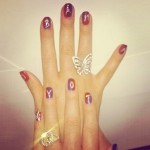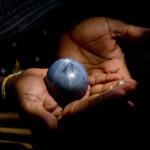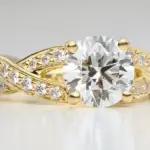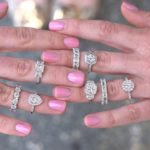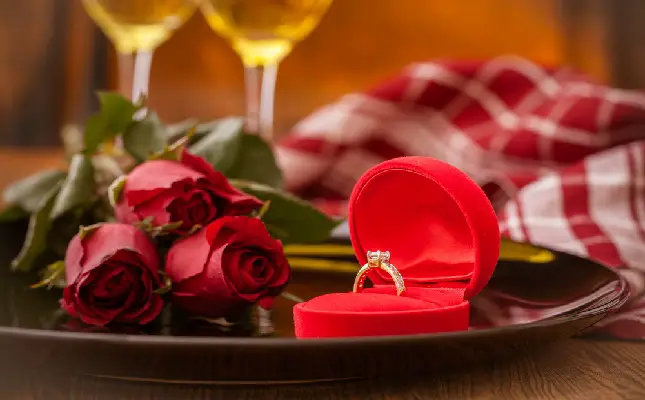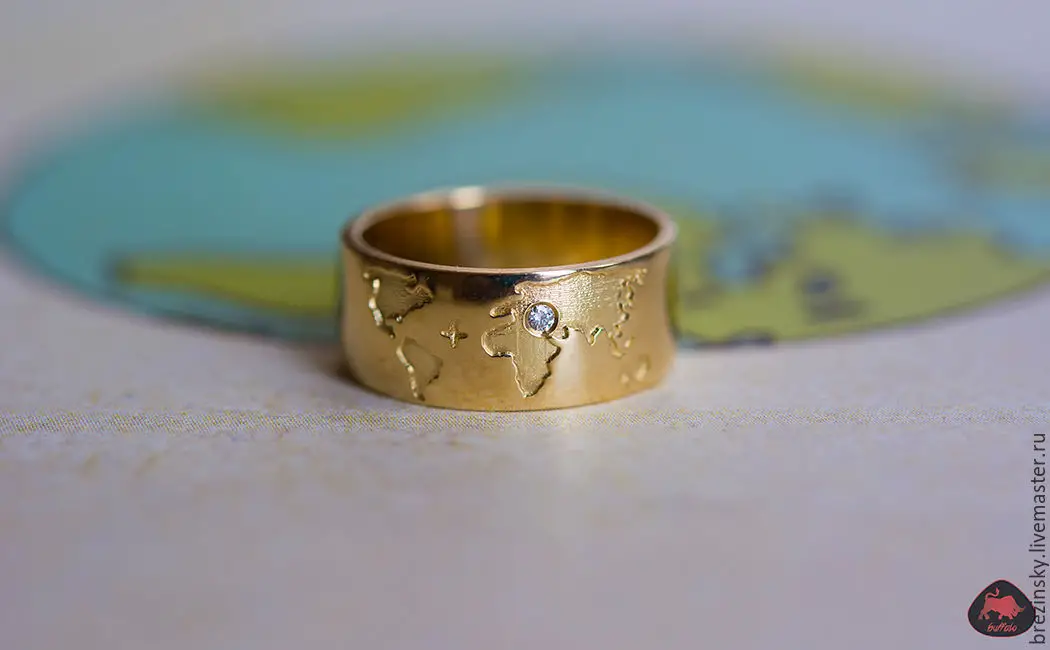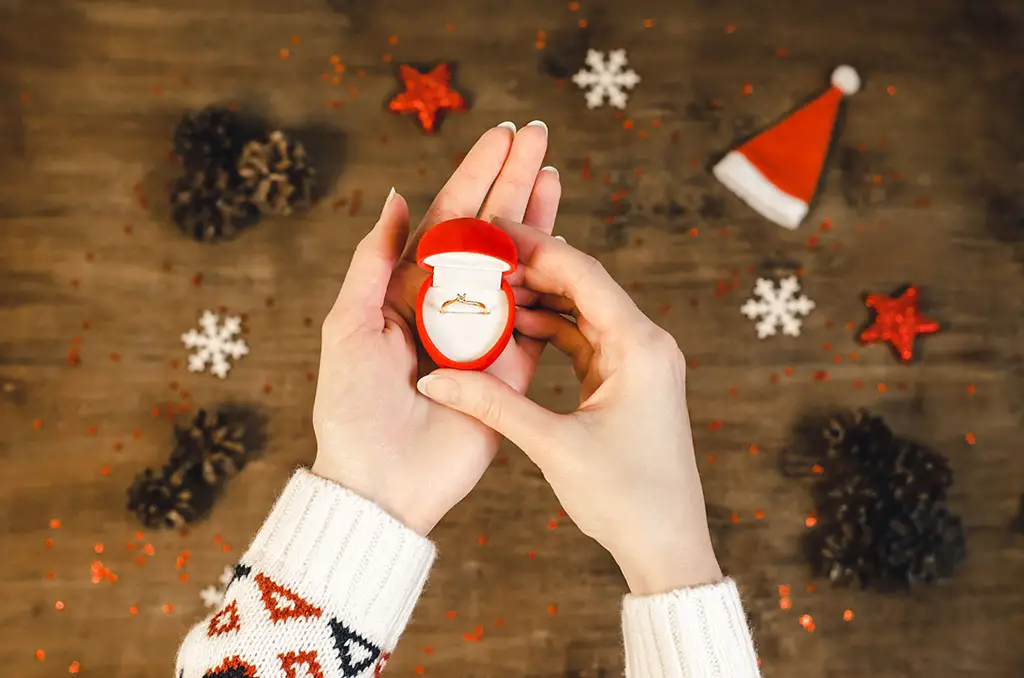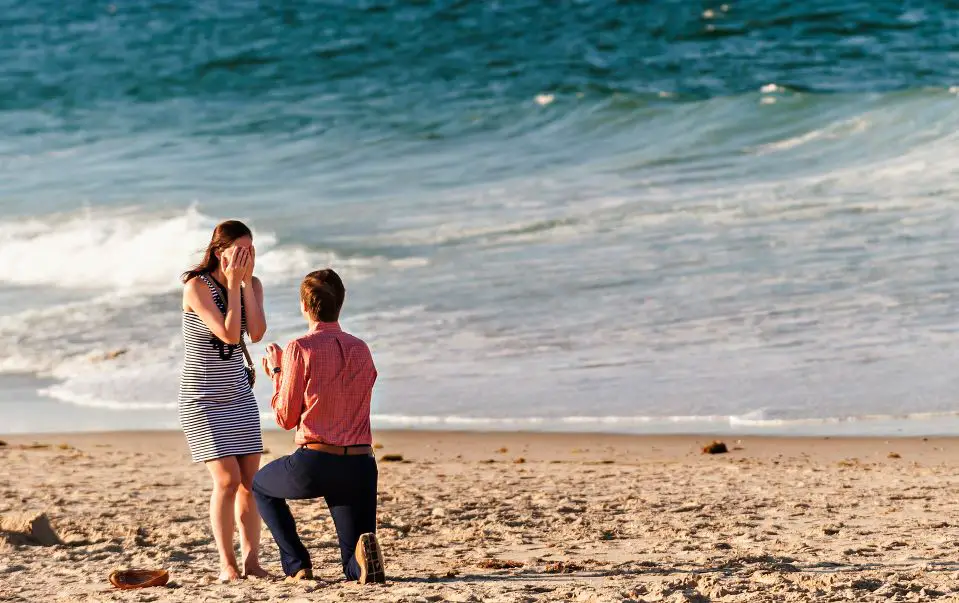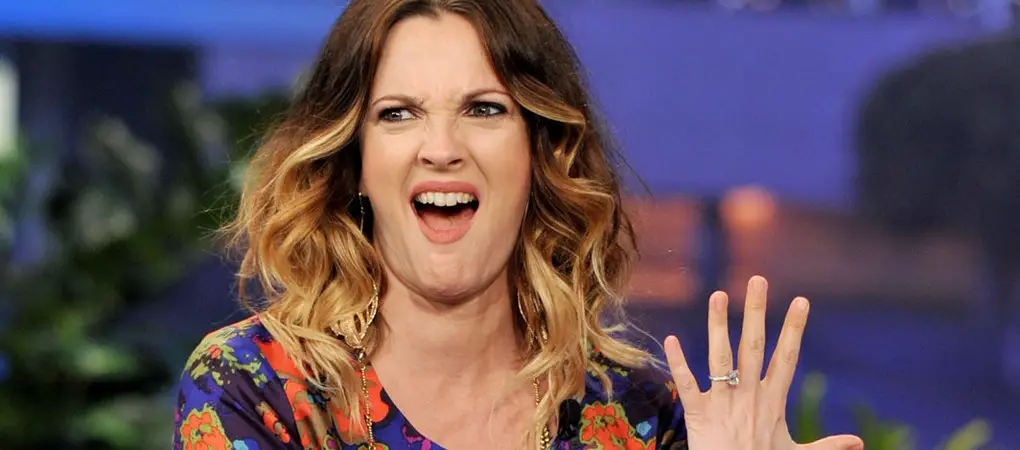That whole two month’s salary rule? Yeah, total BS…
A question that confuses and scares many men when it comes to buying an engagement ring is this: ‘how much money should I spend?’ Sadly, there is no definitive answer to that question. Sorry. It depends on your financial situation, her expectations, and plenty of other factors in between. ‘Sure, but… how much does an engagement ring cost? How much am I expected to spend?’ we hear you ask. Here’s how you can figure that out…
A (very) broad overview of engagement ring costs
Simply put, the spectrum of engagement rings costs is like anything else. You can spend a couple of hundred dollars or a several thousand, and in most cases the more you spend, the better the quality. There are several factors that will add to the overall cost of your engagement ring; diamond size and quality, metal type, detailing, extra stones around the setting or on the band, custom-made designs… and plenty more besides. Still want a ballpark figure to work with? A no-fuss, 14 karat white gold band – not including the diamond or setting – will likely start at around $200. The diamond is a whole other story…
Diamonds, the 4Cs, and how they affect the price tag
More than any other aspect of engagement rings, diamonds have an eye-watering spectrum of price tags. That’s because they are graded according to certain criteria, and these grades affect the overall price. These four criteria are carat, cut, clarity and colour, and they’re collectively known as the 4Cs. Here’s a brief explainer:
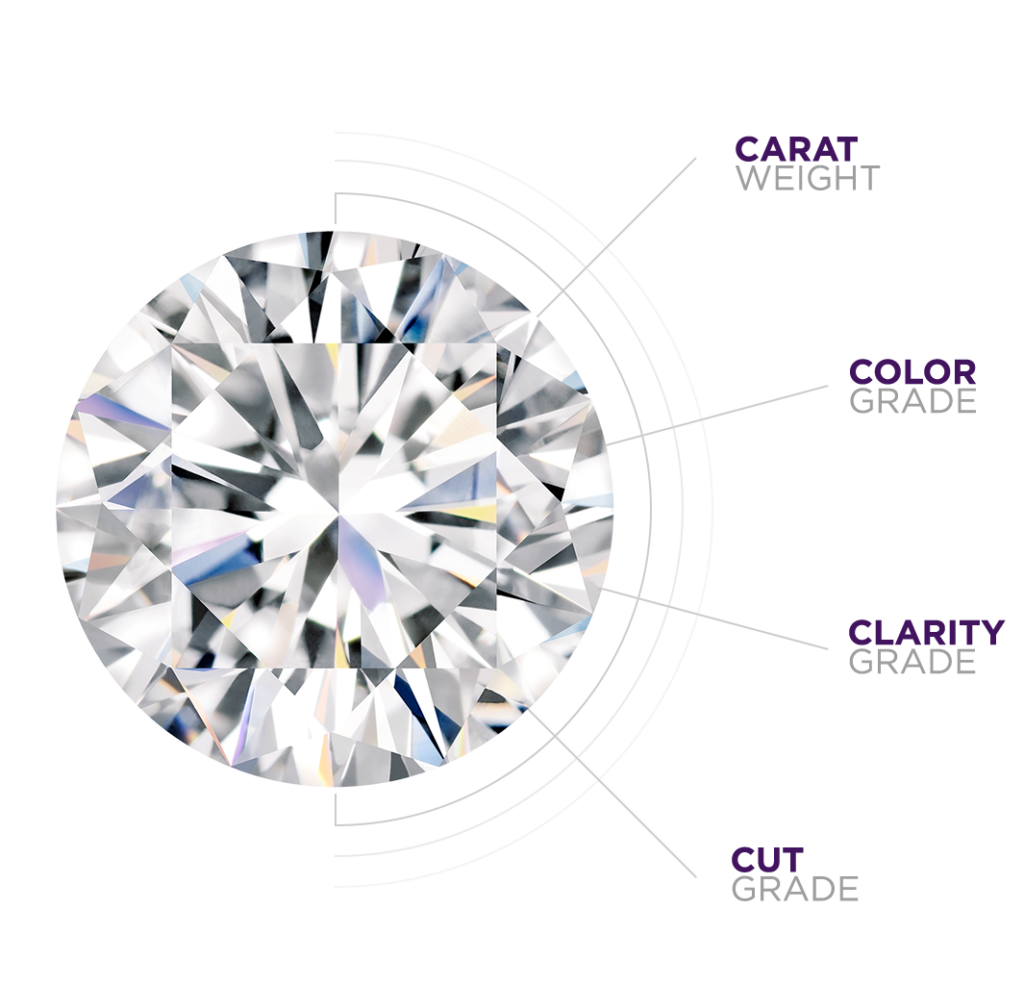
- Carat: the weight and size of the diamond. Prices tend to jump sharply at more desirable numbers, like 0.5 carats, 1 carat, 1.5 carats, etc.
- Cut: the proportions and shape of the diamond. Perfect proportions mean maximum light refraction (otherwise known as sparkle). Some shapes require high levels of skill or a higher loss of rough diamond to achieve the shape, both of which add to the cost.
- Clarity: the naturally occurring flaws within the diamond, which can reduce light refraction. These will not be visible to the naked eye, but will be evident in the price tag.
- Colour: ‘perfect’ diamonds are considered colourless. Diamonds with a tinge of yellow, grey or brown, however small, will be cheaper but will appear less bright.
The order in which you prioritise these 4Cs is up to you, but unless you have unlimited cash to splash, something will have to give. As a jumping off point, a 0.5 carat diamond with the second best grade of cut, clarity and colour (‘Very Good’, ‘VVS1’ and ‘E’ respectively) starts at $1650 on James Allen. However, you can jump up or down a grade in one or more areas to adjust the cost according to your budget.
Metal types and your budget
Thankfully, the cost of precious metals is a lot less variable than precious gems. There is little difference in price between white, yellow or rose gold – but the cost does vary depending on what karat you choose. The higher the karat number of your metal, the more pure it is – and in the case of gold, that makes it both more expensive and less durable. 18, 21, 14 and 9 carat gold is mixed with other metals to increase its durability and therefore decrease its cost. However, you’ll sacrifice colour as a result – 9 karat gold is palest yellow in tone, while 21 or 18 karat gold has a much warmer, golden hue. Platinum, on the other hand, is much more expensive but will never lose its shine or colour and is pretty much invincible. Platinum bands start generally start at around $1000, while gold is usually less than half that or less.

Extra ring details = extra costs
All of the above applies to a pretty basic, fuss-free engagement ring with a small diamond. If you want accent stones, a pave band, a halo setting, a more intricate setting, a custom-made design, a bigger diamond, or basically anything outside of what we described above, expect to pay more.If you want extra details and higher quality on top of all of that, expect to pay a lot more. Remember there may be extra costs too, such as insurance, resizing, engraving, shipping, and maintenance/cleaning fees over time. There are plenty of ways to maximise your budget however – we have a handy guide on that topic here.
So, how should you decide what your budget is?
Your magic number is only for you to decide, but here are some factors that will steer you towards that decision.
- Your current income and expenditure: The best scenario is that after your regular monthly expenses, outstanding loan payments and savings, you still have a little bit of cash left to play with. If that’s the case, you can put that amount towards the cost of your ring and figure out how much you’ll have saved in say, 6-12 months. Your finances and lifestyle will stay largely unaffected, and you may even be ready to buy within a year. Everyone wins!
- Your savings: If the above is a little ambitious, consider taking a proportion of your current savings and adding to it with little amounts (say $5 or $10) every week. You’ll be surprised how quickly you’ll be ready to hit the shops. Just remember to keep your future financial needs in mind – there’s no point buying a fantastic ring if it means you can’t pay your rent for the next 6 months!
- Her expectations: It’s not a very romantic idea, but it’s worth talking to your future wife about your joint finances and her expectations for an engagement ring. Taking her ‘dream ring’ into account will help you set your budget and ensure you can find something she’ll like within that price bracket. It can also help to manage her expectations if they happen to be a little too high, or vice versa – you may be relieved to find out that she doesn’t care what kind of ring she has!
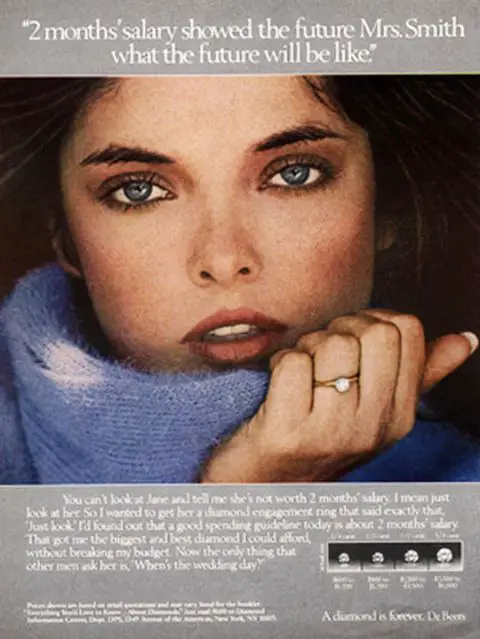
Some final advice
That whole ‘2 months salary’ rule you’ve heard so much about? That was started by a DeBeers marketing campaign decades ago, with the aim of getting men to spend way more than they need to on engagement rings. It’s complete nonsense, and you should pay zero attention to it. Similarly, don’t take any heed of those ‘national average spend on engagement rings’ articles you see all over the internet. That average includes people who spend $20,000+ and those who spend just a few hundred dollars. There’s no need to feel that you should hit the average when your financial situation is unique to anyone else’s. And finally, whatever you do, do NOT get yourself into debt for the sake of a pretty ring. You’ll have to pay for a wedding soon, remember!
